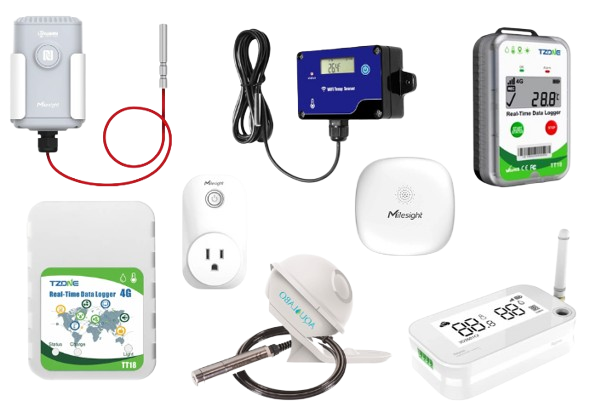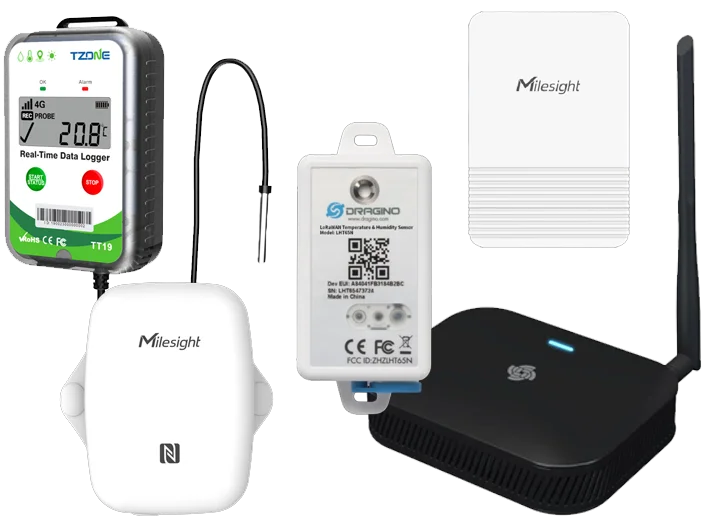Introduction to IOT Temperature Data Loggers
A temperature data logger is an electronic device used to automatically record temperature over time. These loggers are commonly used in cold storage, pharmaceuticals, food distribution, and research labs to ensure that sensitive items are kept within acceptable temperature ranges.
Modern data loggers can store thousands of readings and transmit data to cloud platforms for real-time monitoring, automated alerts, and compliance reporting.

Applications of Temperature Data Loggers
🧪 Pharmaceuticals & Laboratories
Monitor cold storage for vaccines, reagents, and biological samples.
🥶 Cold Chain & Logistics
Ensure consistent temperature during transportation of perishable goods.
🏥 Hospitals & Clinics
Monitor vaccine refrigerators and medication storage.
🍱 Food & Beverage
Maintain food safety in cold rooms, display chillers, and walk-in freezers.
💻 Data Centers & Server Rooms
Prevent equipment failure by tracking temperature in critical infrastructure.
How Does a Temperature Data Logger Work?
A temperature data logger typically consists of the following components:

Types of Temperature Data Loggers
Key Features of Temperature Data Loggers
When selecting a temperature data logger, consider the following:
Data Logger vs Thermometer: What’s the Difference?
While both devices measure temperature, a thermometer provides instantaneous readings, whereas a temperature data logger records and stores readings over time. This makes data loggers better suited for:
Regulatory and Compliance Relevance
Many industries are required by law to maintain temperature logs. Data loggers help meet standards such as:
Using a temperature data logger can simplify audits and reduce human error in record-keeping.
Conclusion
A temperature data logger is a valuable tool for organizations that need to track temperature accurately over time. Whether you’re managing a cold chain, storing sensitive medical products, or maintaining lab conditions, the right data logger can help ensure safety, quality, and compliance.
If you’re evaluating different types of loggers, consider your specific use case, desired features, and compliance needs.
Customer experiences
worth of products saved during cold room down time
data log retrieval time
saved in manpower cost
Frequently Asked Questions
Additional Temperature Data Logger Resources
Learn more about temperature monitoring systems
Refrigeration Temperature Monitoring System
Learn More
Food Safety Monitoring System
Learn More
Hot and Cold Temperature Logger System
Learn More
Ready to make work easy?
Get started with IOTezy, the tech behind workflow optimization.

